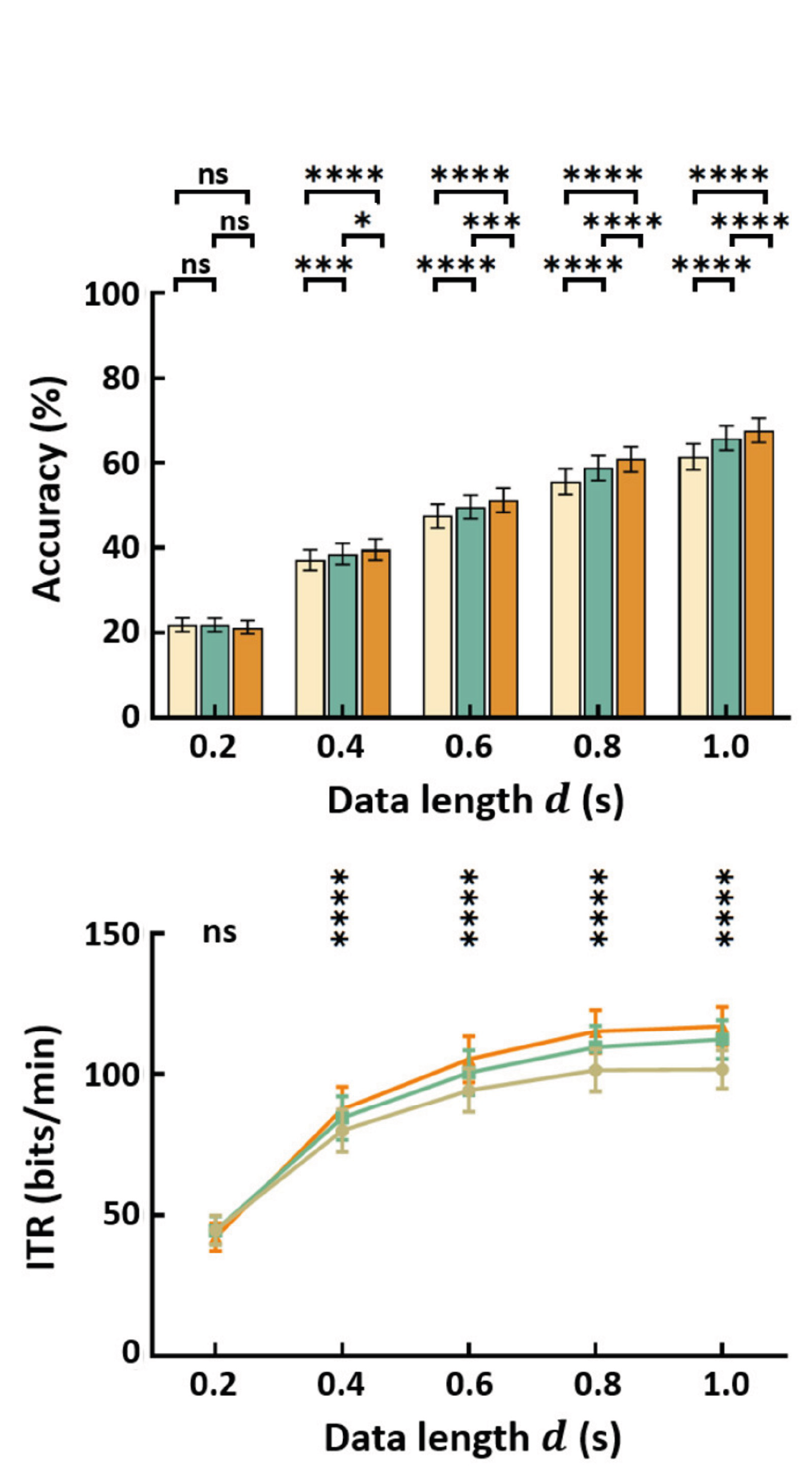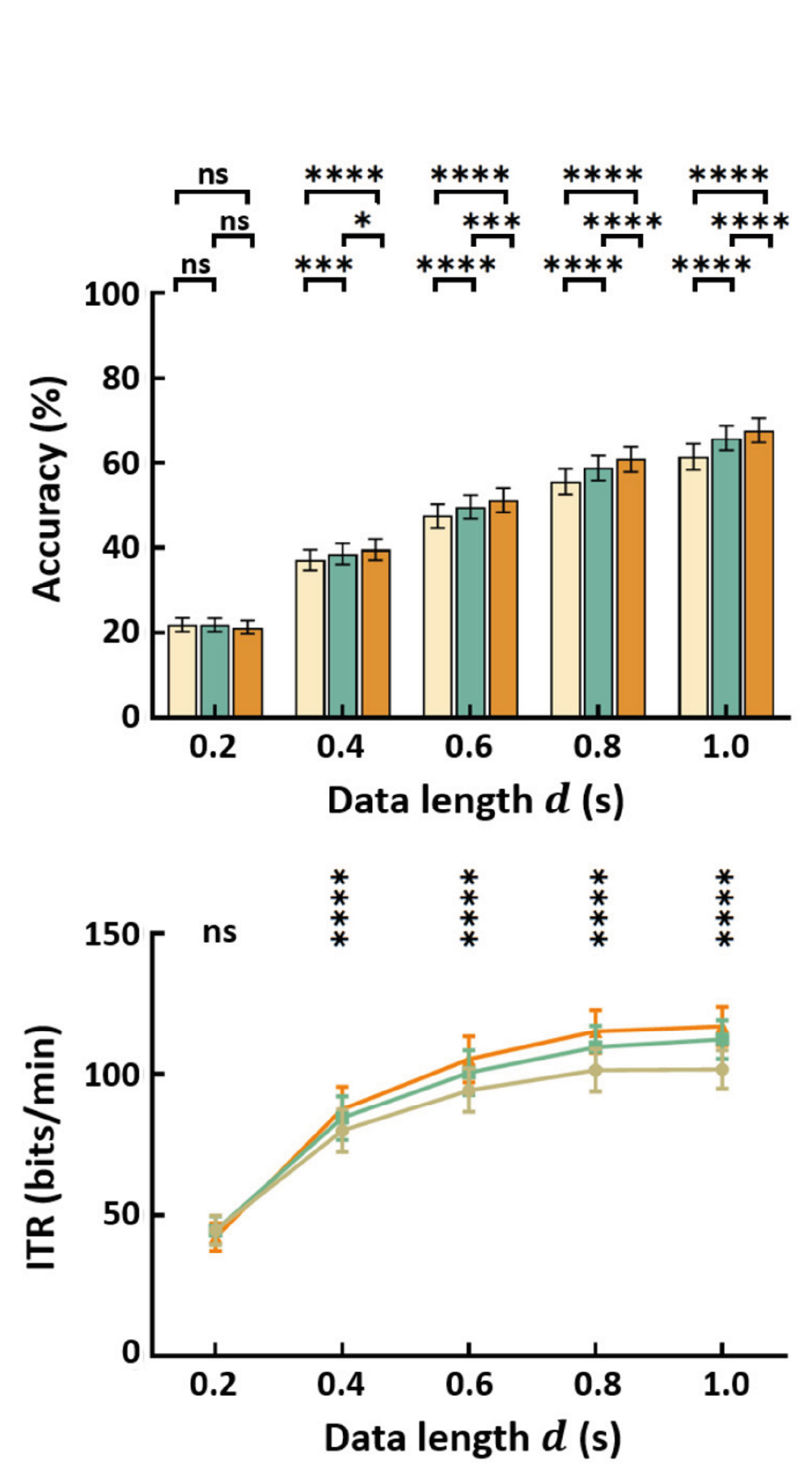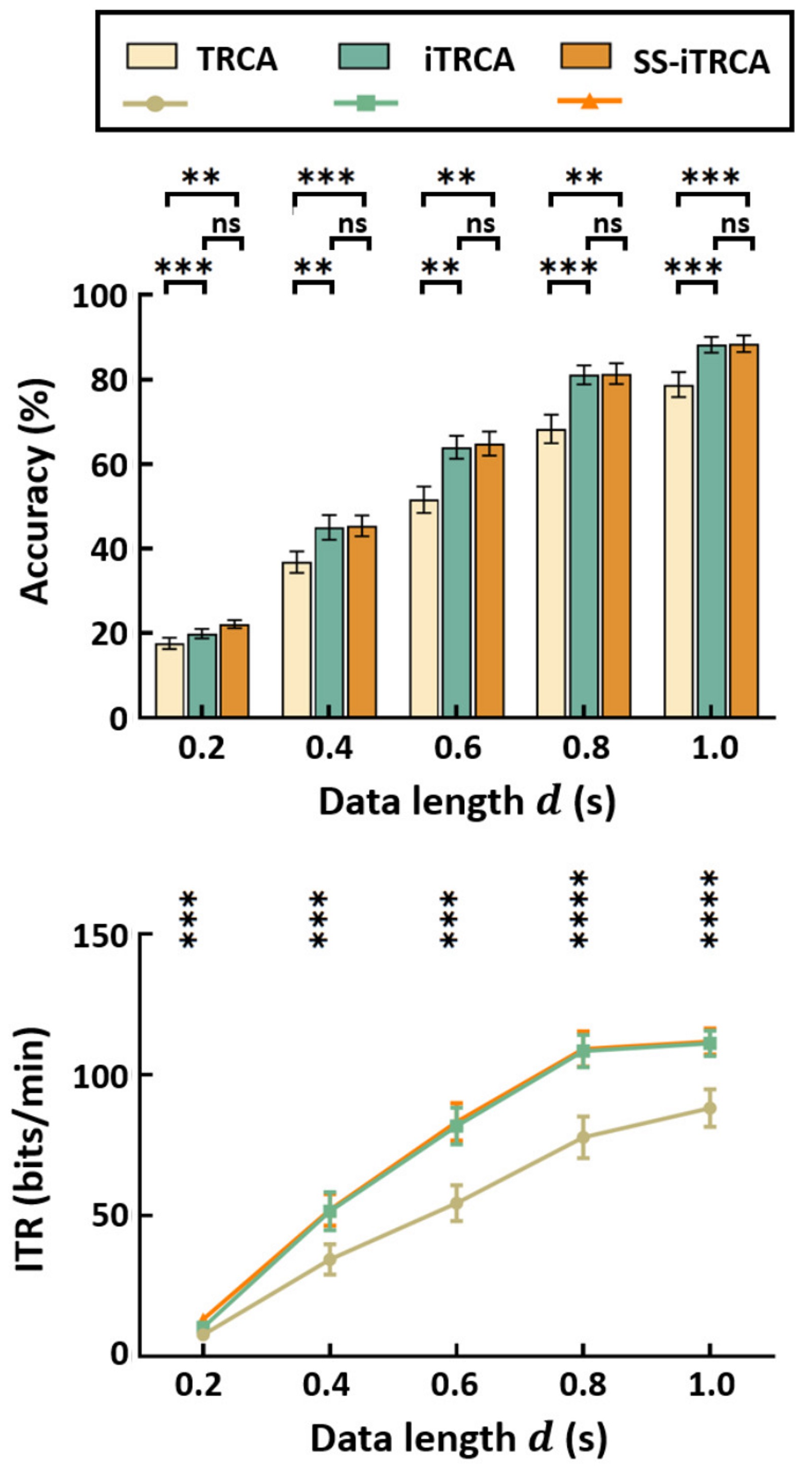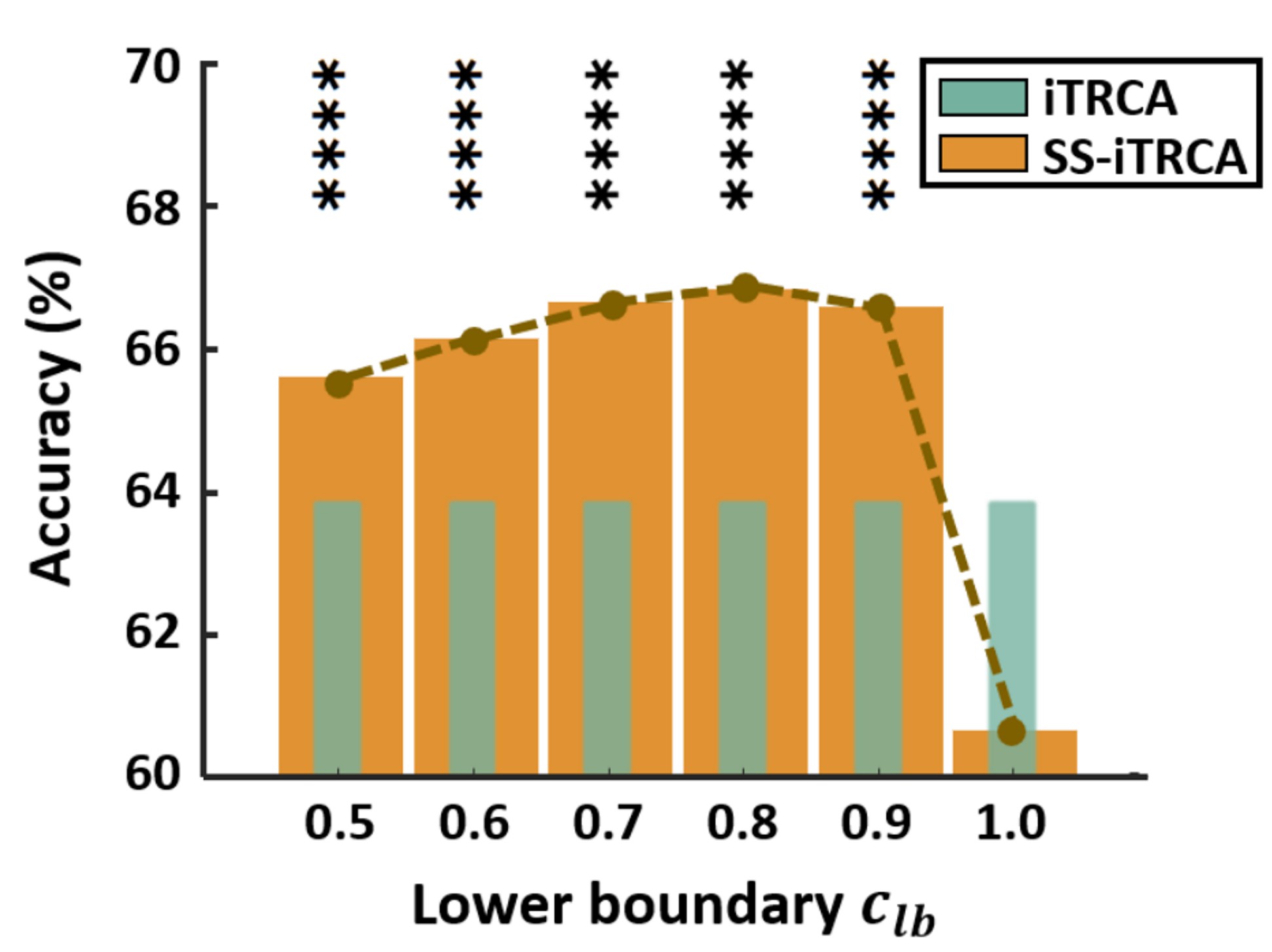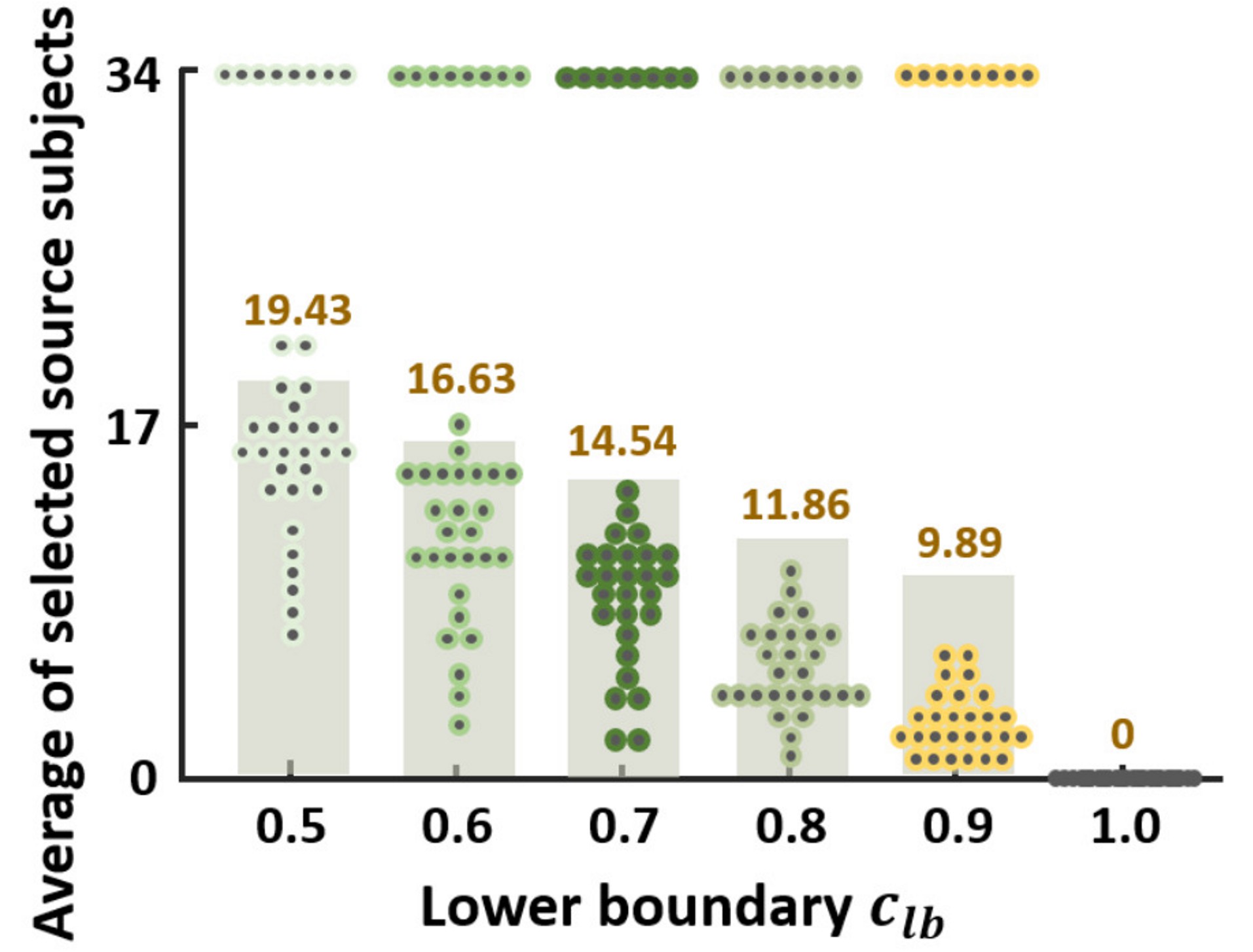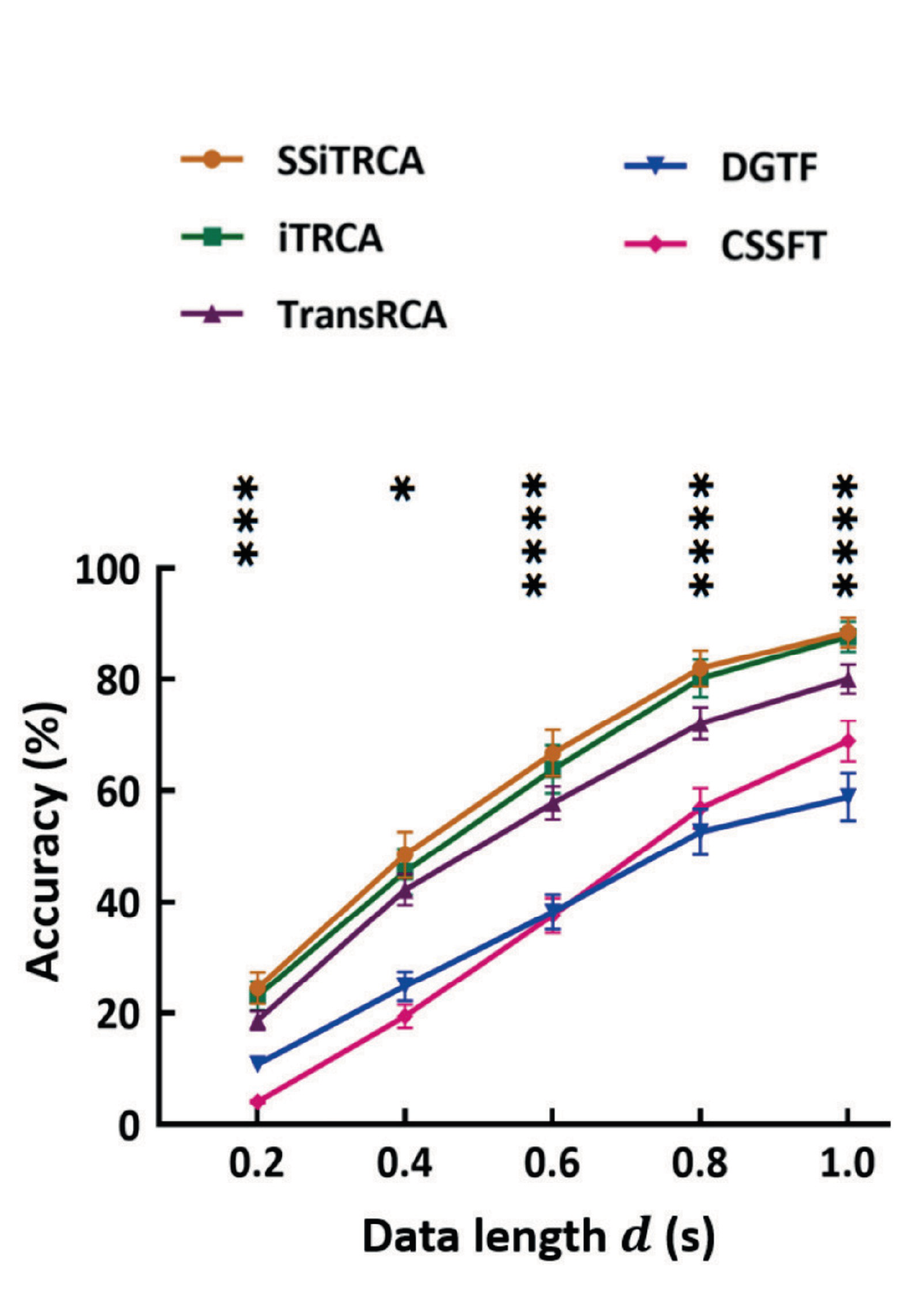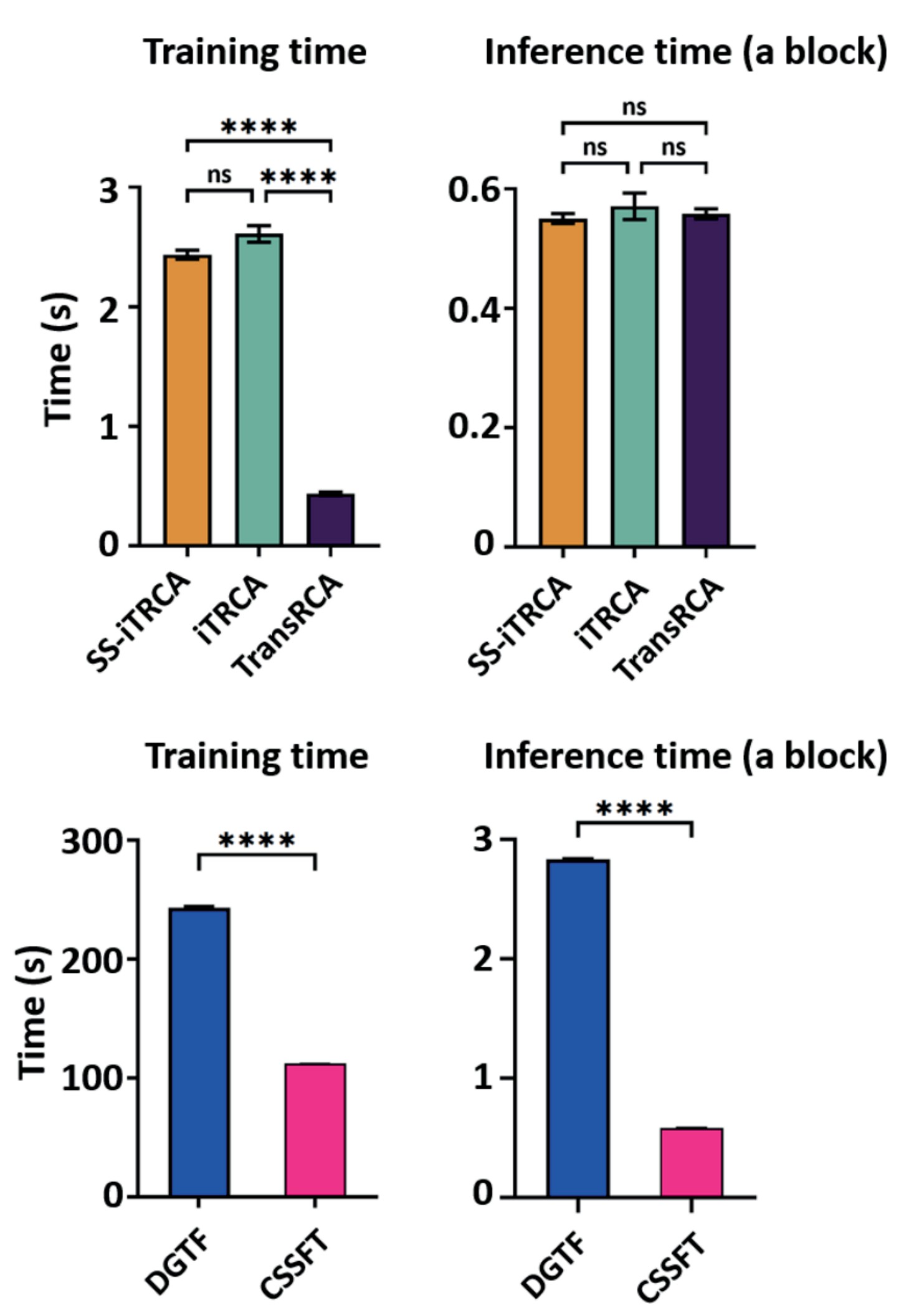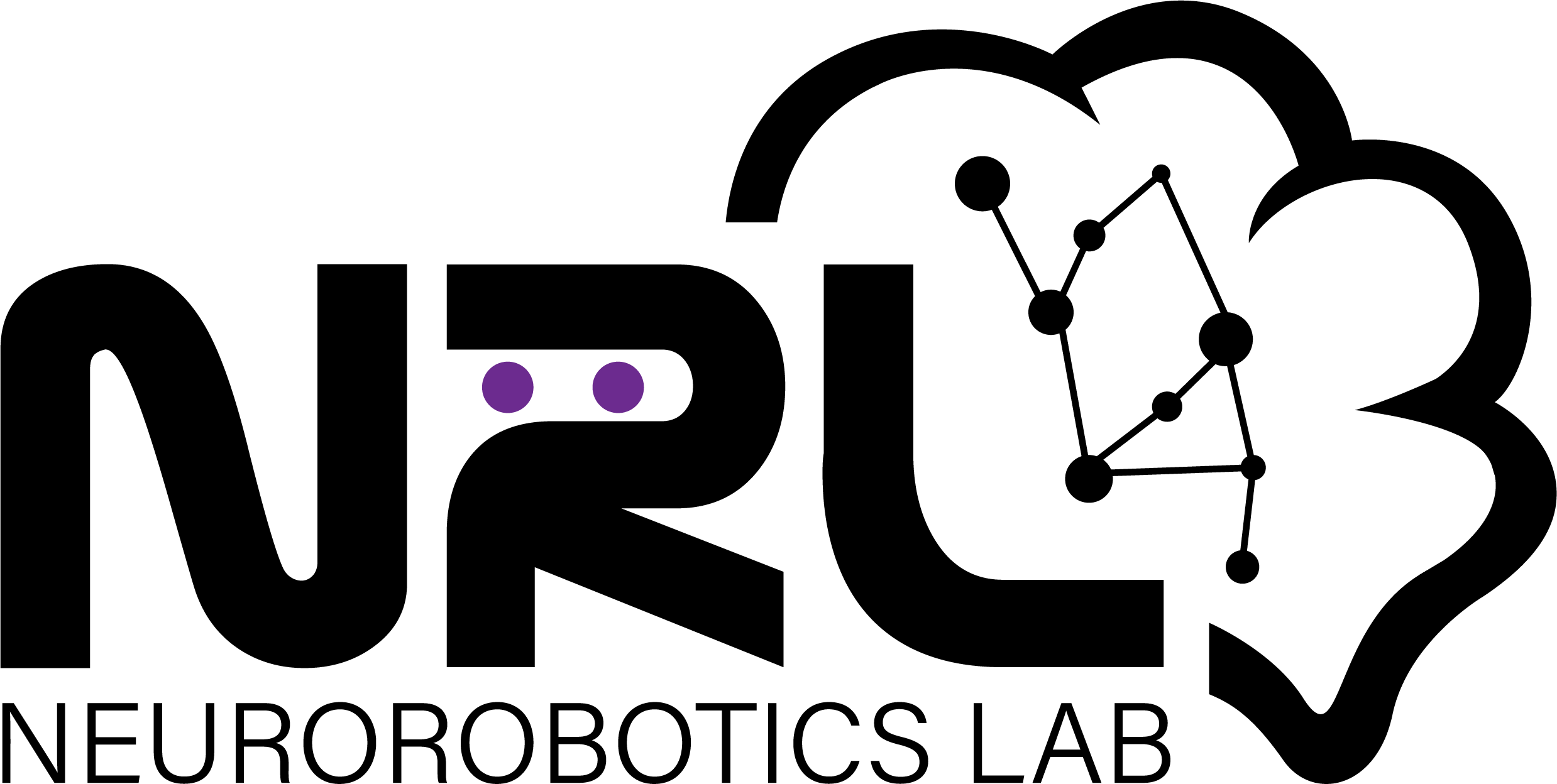Methodology

Overview of the proposed iTRCA framework.
The figure illustrates the proposed iTRCA (instance-based task-related component analysis) framework. For the $i$-th stimulus, the shared information across subjects is captured in a common latent space (the blue block) where source instances and the target subject's individual template are maximally correlated through weight vector $\hat{\mathbf{w}}_i^{GS}$ and the spatial filter $\hat{\mathbf{w}}_i^{GT}$. Meanwhile, target subject's individual information is captured by the spatial filter $\hat{\mathbf{w}}_i^{T_a}$ based on TRCA. In the test stage, the feature $\rho_i$ is composed of the subject-general feature $\rho_{1,i}$ and the subject-specific feature $\rho_{2,i}$, and then combined across all sub-bands to formulate the feature $r_i$ used for SSVEP recognition.
iTRCA computes the task-related components (TRCs) of source subjects as source instances and then projects them into a latent space, where these source instances and the target subject's template exhibit maximal correlation. This latent space captures the underlying characteristics of SSVEP responses shared between source and target subjects, while accounting for the varying contributions of individual source subjects. Meanwhile, iTRCA captures target subject's individual characteristics using TRCA.
However, not all source subjects contribute positively to the target subject's performance. When the knowledge learned from source subjects have a detrimental effect on the target subject (e.g., reducing recognition accuracy), the transfer is regarded as negative transfer. To address this issue, the proposed iTRCA framework is further enhanced by the subject selection-based iTRCA (SS-iTRCA), which integrates a similarity-based subject selection strategy to identify appropriate source subjects for transfer based on their TRCs. This approach mitigates negative transfer by ensuring that only relevant source subjects contribute to the transfer learning process.
